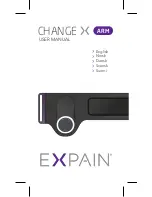
www.petsafe.net
8
EN
FR
ES
NL
IT
DE
STEP 2
Lay Out the System
Basic Planning Tips
Underground cables can carry high voltage. Have all underground cables marked before you dig to
bury your wire. In most areas, this is a free service. For information regarding how these underground wires can affect your
system’s operation, see Step 3 “Position the Boundary Wire”.
• The Boundary Wire
MUST
start at the
Fence Transmitter and make a continuous
loop back
(2A)
.
• Design a layout that is suitable for your
property. Sample layouts are provided in
this section, and a grid for designing your
layout is provided in the back of this guide.
• Twisting two sides of the Boundary Wire
cancels the signal and allows your pet to
cross over that area safely. Plastic or metal
piping will not cancel the signal. Twist
the Boundary Wire 30 times per metre to
cancel the signal
(2A)
.
• Always use gradual turns at the corners
with a minimum 1 m radius, to produce a
more consistent boundary
(2B)
. Do not
use sharp turns, as this will cause gaps in
your boundary.
• To properly contain your pet, we recommend setting a Boundary Width for the Warning and Static Stimulation Zones to
approximately 4 m - 7 m (2.5 m to 3.5 m on each side of the wire).
• Avoid making passageways too narrow for your pet to move about freely (e.g., along the sides of a house).
• The Receiver Collar can be activated inside the house if the Boundary Wire runs along the outside wall of the house. If this
occurs, remove your pet’s Receiver Collar before bringing him inside, decrease the range using the Boundary Width Control
knob or consider an alternative layout.
Sample Layouts
Sample 1: Perimeter Loop (Single Loop)
The
Perimeter Loop is the most common layout. This will
allow your pet to freely and safely roam your entire
property
(2C)
. It can also protect flower gardens and
landscaping
(2D)
.
30 Twists /m
2A
2B
2D
2C









































